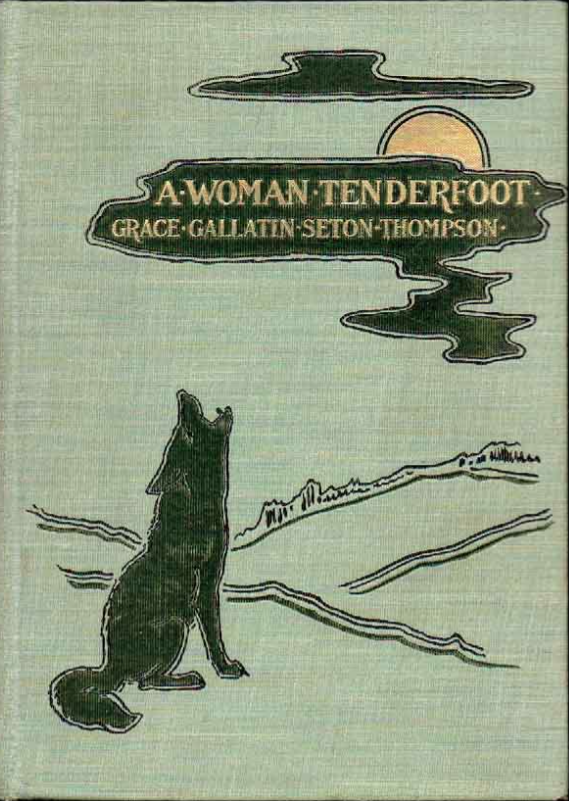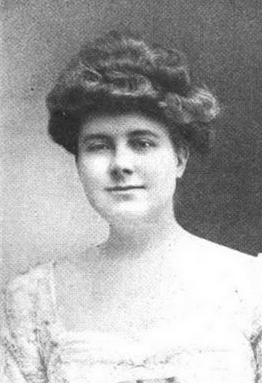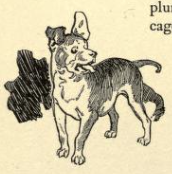

…the real fascination of hunting is not in the killing but in seeing the creature at home amid his glorious surroundings, and feeling the freely rushing blood, the health-giving air, the gleeful sense of joy and life in nature, both within and without.
Grace Gallatin Seton-Thompson (a872-1959)was a turn-of-the-century adventurer and world traveler. After publishing this, her first book, she went on to produce nine more, chronicling her journeys to China, India, Southeast Asia, and South America. She was also the wife of the highly prolific author of wild animal accounts for young people, Ernest Thompson Seaton, whom she refers to as Nimrod in this volume. The appellation is ironic since the Biblical name has come to mean both a hunter and an idiot. I trust she had the former in mind in this case.
As a work of nature writing, this book probably isn’t, unless by association. While Ernest Seton Thompson (whose writings we will visit in future blog posts) wrote stories about the life experiences of North American wildlife (which eventually got him embroiled in the Nature Faker Controversy initiated by John Burroughs, also to be covered at a later date), his wife wrote mostly about the experience of being a woman roaming the wild West when the West was truly quite wild. The book is filled with advice to other tenderfoot wives, sometimes serious, other times more tongue-in-cheek. An entire early chapter is devoted to the best wardrobe choices for heading into the mountains on horseback. Her account leaves the reader thinking that the expedition she undertook with her husband was largely about hunting; however, there is a passage in which she reports on trapping a woodchuck which leads me to think it was mostly intended as a research opportunity.
Nimrod wanted some photographs of animals from life, and the energy which we put forth to obtain these was a constant surprise and disturbance to Uncle John and his co-loafers. They could understand why one might trap an animal, but to let it go again unhurt, after spending hours over it with a camera, was a problem that required many drinks and much quiet cogitation in the shade of the office.
For days we tried to get a woodchuck. At last we succeeded, and I find this note written in my journal for that date: “Oct. 15th: Nimrod caught a woodchuck to-day, a baby one, and we called him Johnny. Johnny stayed with us all day in his cage, while Nimrod made a sketch of him and I took his picture. Then, in the late afternoon, we took him back to his home in the stone-clad hill, and put him among his brothers and sisters, who peeped cautiously at us from various rocky niches, higher up the hill.
Little Johnny must have had a great deal to say of the strange ways and food of the big white animal. It must have been hard, too, for him to have found suitable woodchuck language to express his sensations when he was carried, oh! such a long way, in a big sack that grew on the side of his captor; and of the taste of peppermint candy, which he ate in his prettiest style, sitting on his haunches and clutching the morsel in both forepaws like any well-bred baby woodchuck. And then those delicious sugar cookies that Mrs. Spiker had just baked ! How could he make his ignorant brother chuckies appreciate those cookies ! Poor little Johnny is a marked woodchuck. He has seen the world.”
Apparently, neither she nor her husband was an expert in woodchuck nutrition.
In her charming, whimsical way, Grace then proceeds to share about her husband’s efforts to trap a skunk for photographs:
When Nimrod went hunting skunks, the group at the office gave us up. ” Locoed, plumb locoed,” was the verdict.
Have you ever been on a skunk hunt? But perhaps you have no prejudices. I had. My code of action for a skunk was, if you see a black and white animal, don’t stop to admire its beautiful bushy tail, but give a good imitation of a young woman running for her life.
This did not suit Nimrod. He assured me that there was no danger if we treated his skunkship respectfully, and, as I was the photographer, I put on my old clothes and meekly fell in line. Nimrod set several box traps in places where skunks had been. These traps were merely soap boxes raised at one end by a figure four arrangement of sticks, so that when the animal goes inside and touches the bait the sticks fall apart, down comes the box, and the animal is caged unhurt. The next morning we went the rounds. The first trap was unsprung. The second one was down. Of course we could not see inside. Was it empty? Was the occupant a rat or a skunk, and if so, what was he going to do?
Nimrod approached the trap. Just then a big tree chanced to get between me and it. I stopped, thinking that as good a place as any to await developments.
” It’s a skunk all right,” Nimrod announced gleefully.
The box was rather heavy, so Nimrod went to Yeddar’s, which was not far away, to see if he could get one of the loungers to help carry the captive to a large wire cage that we had rigged up near our shack.
There were six men near the office, bronzed mountaineers, men of guns and grit, men who had spent their lives facing danger; but, when it came to facing a skunk, each looked at Nimrod as one would at a crazy man and had important business elsewhere. For once I thoroughly appreciated their point of view, but as there was no one else I took one end of the box, and we started.
It was a precarious pilgrimage, but we moved gently and managed not to outrage the little animal’s feelings.
When the men saw us coming across the creek, with one accord they all went in and took a drink.
We gingerly urged Mr. Skunk into the big cage, and with the greatest caution, never making a sudden move, I took his picture. All was as merry as a marriage bell, and might have continued so but for that puppy Sim. That is the trouble with skunks; they will lose their manners if startled, and dogs startle skunks.
Of course the puppy barked; of course the skunk did not like it. He ruffled up his cold black nose, and elevated his bushy tail his beautiful, plumy tail. I opened the door of his cage and, snatching the puppy, fled.
The skunk was a wise and good animal, really a gentleman, if treated politely. He appreciated my efforts on his behalf. He forbearingly lowered his tail, composed his fur, and walked out of the cage and into the near-by woods as tamely as a house tabby out for a stroll.

Grace’s work opens with the observation that “This book is a tribute to the West”. Ultimately, as a semi-comedic Western adventure, it is a charming read. She does in fact go hunting with her husband, killing first an elk and then an antelope. She reminds readers, however, that having bagged these two, she hunted from that point on only with a camera.

Elsewhere in the book, she shares a delightful story about getting lost with her husband. She also describes scenes of ducks swimming, does prancing, coyotes calling, and pikas gathering hay in the high Rockies. Throughout the book, the author conveys a fortitude that contradicts her fairly frequent self-deprecating remarks. As she notes by the end of the book, her adventures turned her into a seasoned traveler, and she was no longer able to claim the title of Woman Tenderfoot.